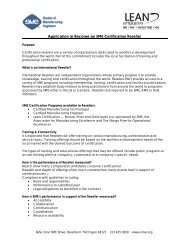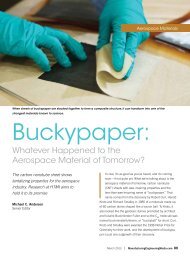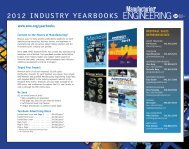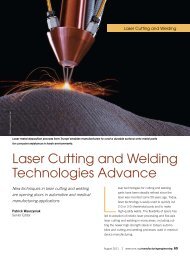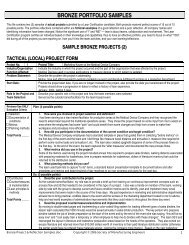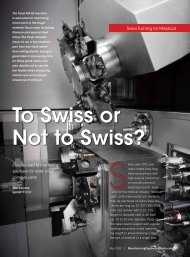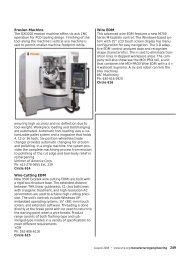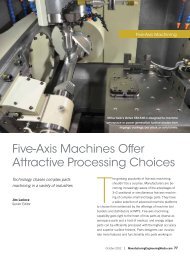UNDER THIRTY - Society of Manufacturing Engineers
UNDER THIRTY - Society of Manufacturing Engineers
UNDER THIRTY - Society of Manufacturing Engineers
- No tags were found...
Create successful ePaper yourself
Turn your PDF publications into a flip-book with our unique Google optimized e-Paper software.
Amanda NixonAge: 21StudentFlint, MIIMTS, as <strong>Manufacturing</strong> Engineering readersknow, is a major event in the manufacturingworld: The biennial trade show is the largestevent <strong>of</strong> its kind in North America. When a majorinternational company has a new robotic manufacturingsolution to reveal and demonstrate at theshow, you know they’ll do everything they can tomake certain that nothing goes wrong. So what kind<strong>of</strong> experienced, talented material-handling expertwould such a company trust to lead such a project?In 2012, Fanuc Robotics turned to a 20-year-oldstudent intern named Amanda Nixon—who camethrough with flying colors.Amanda majors in mechanical engineering atKettering University (Flint, MI) and has worked as atemp/co-op at Fanuc’sRochester Hills,MI, facility <strong>of</strong>f and onsince July 2010. Priorto IMTS 2012, she had spent three-month stints atFanuc, learning operations, product development,and—for six months—material handling.Amanda told ME Media in our December 2012 issuethat the Fanuc booth had 15–20 different demo cells,some with multiple robot implementations. After ideasfor the demo cells took shape in March, the designprogram-test-approvecycle took four to five months.“It took that long because most <strong>of</strong> the cells forIMTS were brand new and had a lot <strong>of</strong> custom partsthat needed to be made for the full functionality <strong>of</strong>the cell,” she explained. The cell Amanda helpeddesign and program featured the LR-Mate 200iDintelligent assembly robot.<strong>UNDER</strong> <strong>THIRTY</strong>“I was considered partial owner <strong>of</strong> the cell alongwith a senior engineer. The owners <strong>of</strong> the cell didmost <strong>of</strong> the work, along with a few other people whohelped throughout the process,” she explained.“The robot’s job was to pick light sockets <strong>of</strong>f aFlexomation feeder at random and insert them intotheir fixture. Fanuc’s 2D iRVision was used for therobot to pick the parts that were fed at random.A recirculating system was designed so the robotcould continuously go through parts during theshow without stopping. The point <strong>of</strong> the cell was toshow the speed <strong>of</strong> the new robot and to market itsnew capabilities.”Amanda began to show interest in engineering “atage 14 when she attended an SME Education FoundationSTEPS camp,”reports her aunt, SME’sRosemary Csizmadia.Amanda says thatshe also has benefited from the examples <strong>of</strong> heruncle—an engineer at Ford—and an older sister andbrother, both <strong>of</strong> whom are engineers at Caterpillar.(Full disclosure: Amanda’s mom as well as her auntare SME employees.)What Amanda enjoys about manufacturing is thesatisfaction <strong>of</strong> designing a project or system step bystep, and seeing it, at last, successfully come togetherand work. That’s something that isn’t talked aboutenough, she thinks. “In the media, the term ‘engineering’can have negative connotations—engineers areshown as the high-school nerds or geeks as grownups.”But in reality, “engineers are the people whomake things—and make things happen.” ME"<strong>Engineers</strong> are the people who make things—and make things happen."<strong>THIRTY</strong> <strong>UNDER</strong> <strong>THIRTY</strong> PROFILES20 <strong>Manufacturing</strong>EngineeringMedia.com | July 2013





